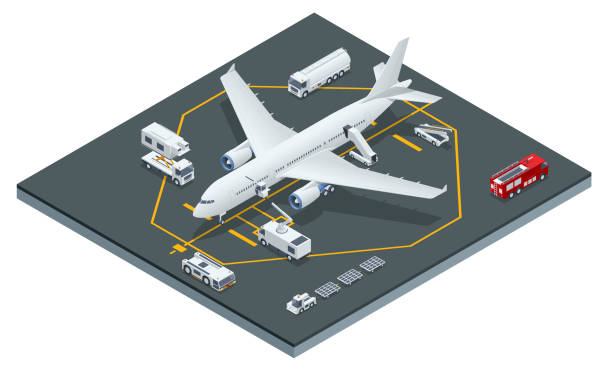The airline business is undergoing a tremendous shift in an era of fast technological innovation. Application Programming Interfaces (APIs) are at the vanguard of this change, altering the way airlines operate and engage with consumers. APIs are becoming increasingly important in simplifying operations, increasing efficiency, and improving the entire travel experience. APIs are transforming airline operations by seamlessly linking systems, enabling dynamic pricing and inventory management, easing auxiliary service integration, and customizing consumer experiences. This article looks at how APIs are altering the airline business, paving the way for a more smooth, efficient, and customer-centric future.

APIs’ Transformative Power In Airline Operations
Various technologies are shaping the future of airline operations, and one of the important transformational factors is the usage of Application Programming Interfaces (APIs). APIs are critical in the airline business for simplifying procedures, increasing efficiency, and improving overall customer experience. Here are a few examples of how APIs are altering the industry:
- APIs allow airlines to interface their systems with various travel partners such as hotels, vehicle rental companies, and online travel agents (OTAs). This connection enables clients to book flights, accommodations, and transportation in a single transaction, eliminating the need to visit several websites or make separate arrangements. APIs provide real-time data interchange across systems, assuring accurate availability and price data.
- Inventory Management and Dynamic Pricing: APIs enable airlines to deploy dynamic pricing strategies and optimize inventory management. Airlines can obtain real-time market data, analyze demand variations, and alter rates by linking to other systems such as global distribution systems (GDS) and revenue management tools. APIs allow for the automated updating of fares, availability, and inventory across numerous channels, assuring consistency while decreasing manual labor.
- Automation and operational efficiency: APIs are critical in automating airline operations. They make it possible to integrate multiple operational systems such as flight management, crew scheduling, maintenance, and baggage handling. This connection enhances operational efficiency by streamlining data flow, reducing human mistakes, and streamlining data flow. APIs also make it easier to communicate with other partners like air traffic control systems, meteorological data providers, and ground handling services, assuring flawless coordination and improving overall operational performance.
- Mobile Applications and Self-Service: APIs enable airlines to create comprehensive mobile applications that improve passengers’ self-service capabilities. APIs provide mobile check-in, digital boarding cards, real-time flight status information, and luggage monitoring. Through mobile applications, passengers may readily access essential information, make changes to bookings, and receive individualized notifications, increasing convenience and decreasing the need for manual interventions.
What Is The API For Airlines?
In this situation, for example, we will utilize Flightlabs API, which is one of the most sophisticated flight data suppliers on the market; if you input the IATA code of a city (in this case, AAA) into the API endpoint “Cities”, you will receive the following responses:
{
"success": true,
"data": [
{
"cityId": "1",
"nameCity": "Anaa",
"codeIataCity": "AAA",
"codeIso2Country": "PF",
"latitudeCity": "-17.05",
"longitudeCity": "-145.41667",
"timezone": "Pacific/Tahiti",
"GMT": "-10",
"geonameId": "0"
},
[...]
]
}To use Flightlabs, developers must follow the API documentation and requirements, which explain the accessible endpoints, request parameters, and response formats. The API will then provide data in a format that can be used in an application or service, such as JSON or XML.
And Where Do You Get This API?

- Create a FlightLabs account. Then choose the desired endpoint or input airport or airline IATA or ICAO codes.
- Before contacting the API, enter these codes. A unique API key will be provided to you on your account dashboard.
- Finally, press the “run” button to finish the procedure! The API will appear on your screen.
- You might also choose a programming language.
- It’s as simple as that! You will then receive all of the aircraft’s available information in JSON format.
Related Post: Improving Airline Safety And Security With A Flight API

